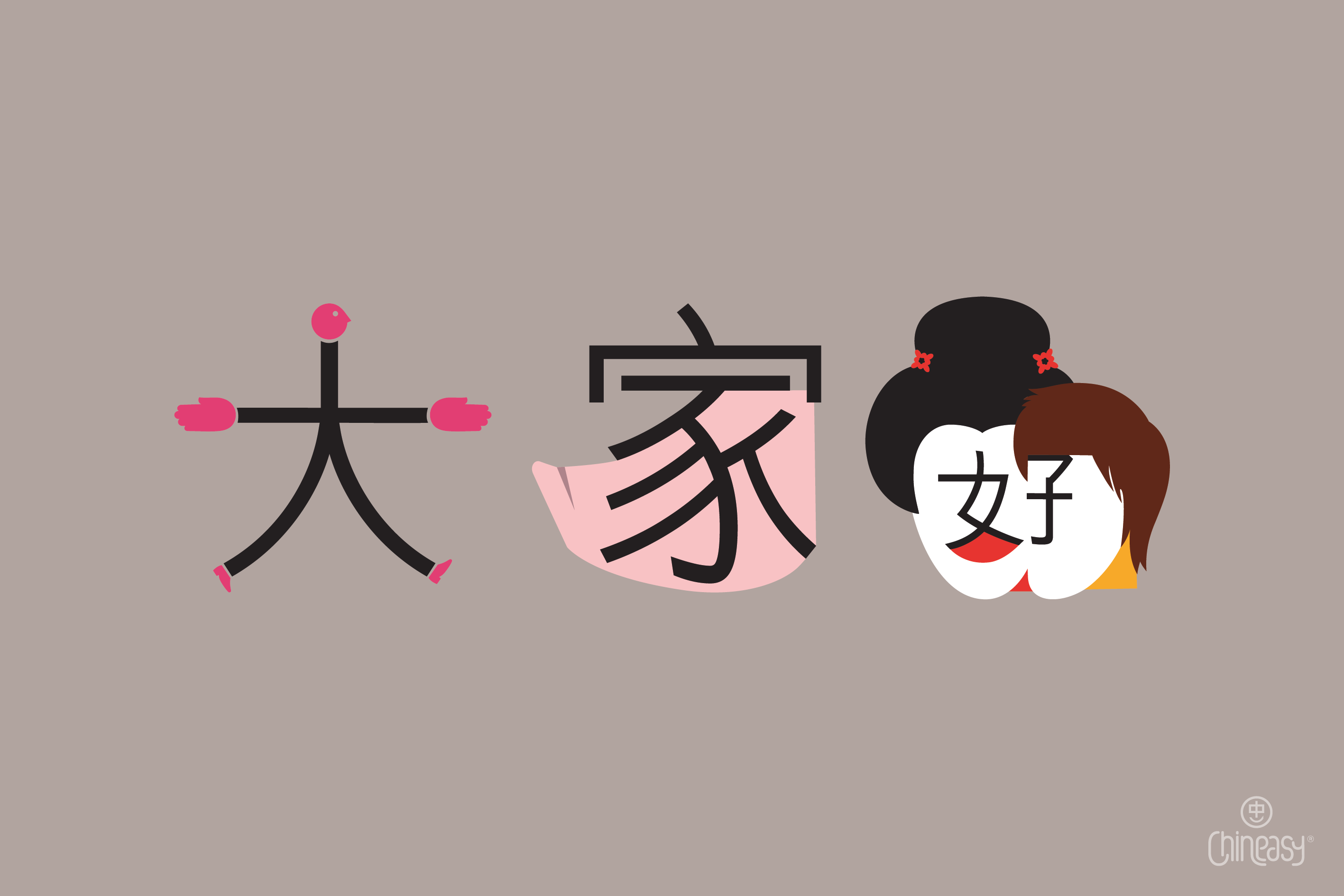Picture this: the beach, the swimming pool, the sun shining on your sunglasses, long daylight hours and warm summer nights. What season is it? It’s summer!And aside from all the outdoor fun, one of the best things about summer is the food. From fresh fruits to yummy BBQs, and even delicious desserts, there’s sobb much to enjoy.
In this blog post, we’ll explore 10 Chinese words that encapsulate your must-have foods this season. So, grab a snack, get comfortable, and let’s get started. It’s time to explore the flavors of summer in a whole new language!
Cold noodles 涼麵/凉面
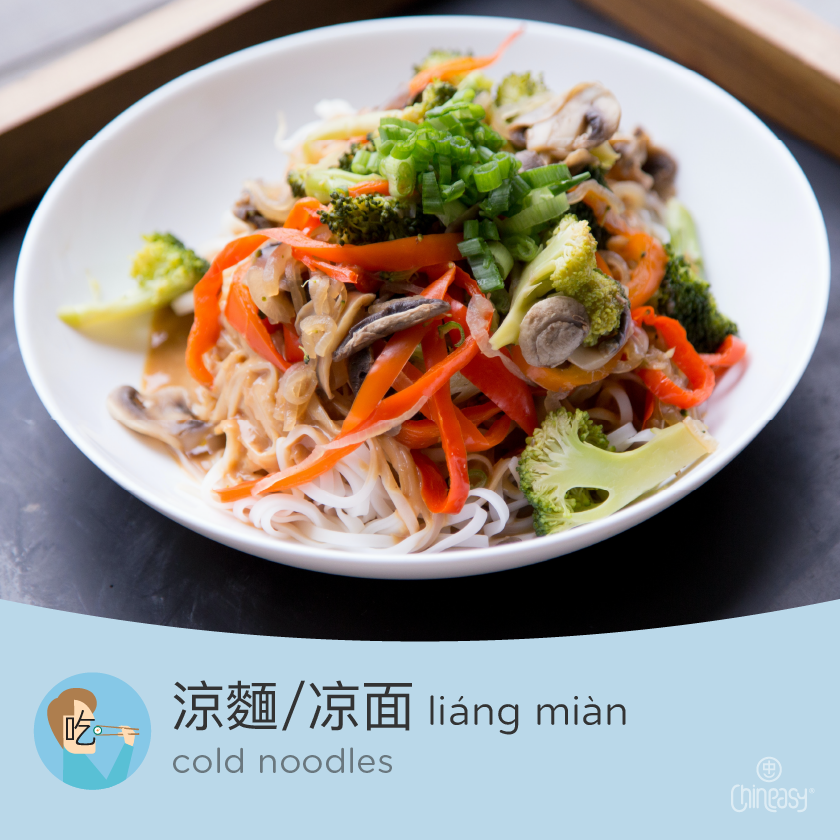
Though rice is a common staple in Chinese cuisine, noodles also make a star appearance, especially during the warm summer months. One dish that Chinese food lovers can’t resist is 涼麵/凉面 (liáng miàn; cold noodles). The character 涼/凉 (liáng) means “cold” or “cool,” and 麵/面 (miàn) translates to “noodle” – a perfect combination for a refreshing summer meal.
This versatile dish is not just easy to whip up but is also delightfully customizable, with each region in China adding their unique twist. One standout variation is the Sichuan (四川) cold spicy noodles, an explosion of flavors brought together by wheat noodles, fresh ginger, garlic, toasted sesame oil, light soy sauce, and two critical spices: Sichuan chili oil and ground Sichuan pepper. And for that final flourish? A sprinkle of sliced scallion greens and a handful of toasted peanuts.
When cooking noodles, remember: achieving the right texture is key. Avoid overcooking them, and quickly cool them down in a bowl of icy cold water once they’re done. But don’t let them linger for too long in the cold bath. As soon as they’re cool, it’s time to take them out and dress them up in all that delicious flavor.
Pizza 披薩/披萨
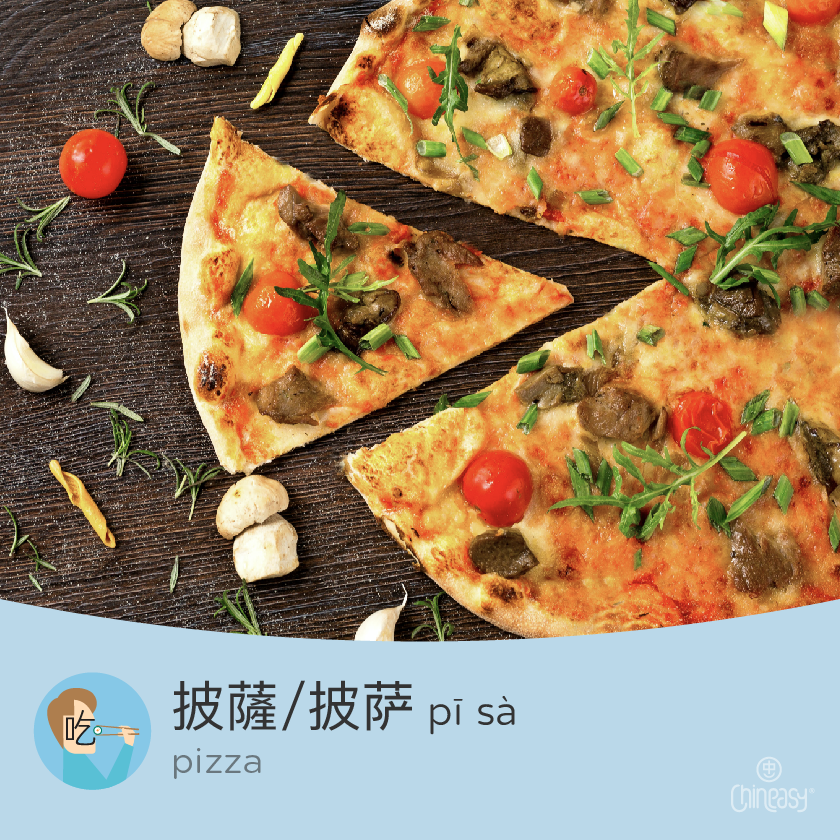
Everyone loves pizza, no matter what time of year it is. But during summer, pizza feels extra special. Whether you’re by the pool with a cold drink or having a fun barbecue in your backyard, pizza is always a good choice.
In Chinese, we say “pizza” like this: 披薩/披萨 (pī sà). This word comes from the English word “pizza.” Some people in China also use another word for pizza, 比薩/比萨 (bǐ sà). Even though older people in China don’t usually like Western food as much as young people do, almost everyone likes 披薩/披萨.
Barbecue 烤肉
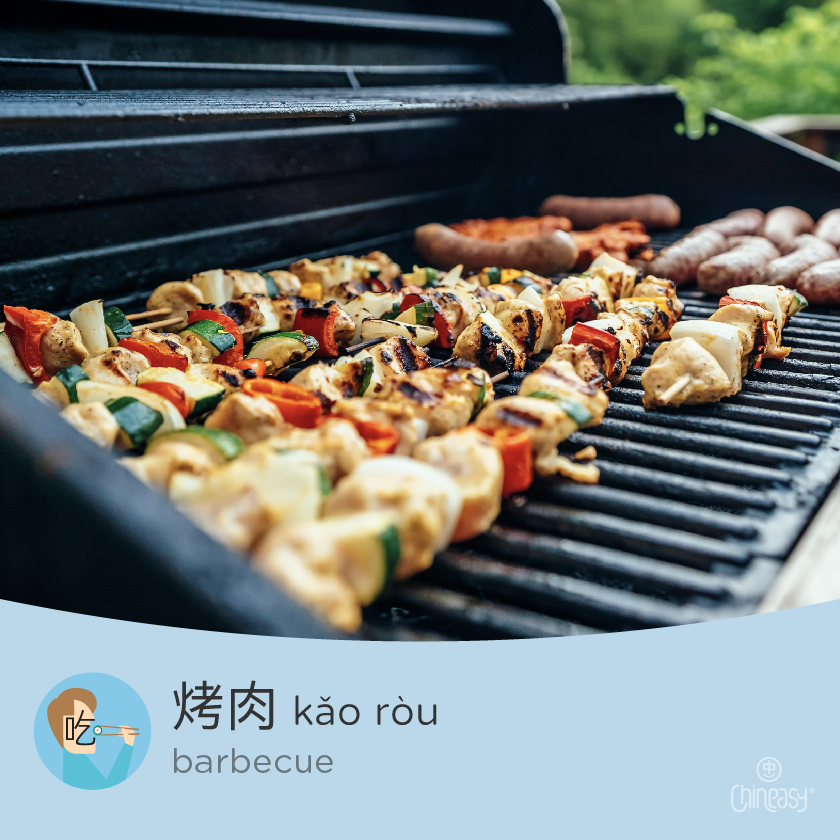
Imagine this: the familiar sizzle of the outdoor grill, tunes filling the air, a spread of refreshing salads, and icy beverages at arm’s reach. What’s missing? Ah, yes – the star of the show, a barbecue. In Chinese, this summer favorite activity is called 烤肉 (kǎo ròu). 烤 (kǎo) translates to “to roast” or “to bake,” while 肉 (ròu) means “meat.”
A barbecue gathering with family or friends isn’t just about food – it’s a cherished ritual of togetherness. Yet, not everyone in China has the luxury of a garden for a classic backyard barbecue, particularly those living in bustling Tier 1 and Tier 2 cities. However, the communal spirit of barbecue finds a way, with many communities providing designated outdoor spaces for residents to grill and chill.
For a different twist on the barbecue experience, consider a street barbecue, or 燒烤/烧烤 (shāo kǎo; to heat + to roast). This isn’t your typical backyard barbecue. Street barbecue is a destination event, with foodies flocking to places like Zibo in Shandong province, dubbed the “outdoor barbecue capital.” A street barbecue is a culinary spectacle, featuring marinated, heavily spiced foods roasted on skewers. The experience isn’t complete without a signature dipping sauce to give your roasted treats an extra flavor boost.
Corn 玉米
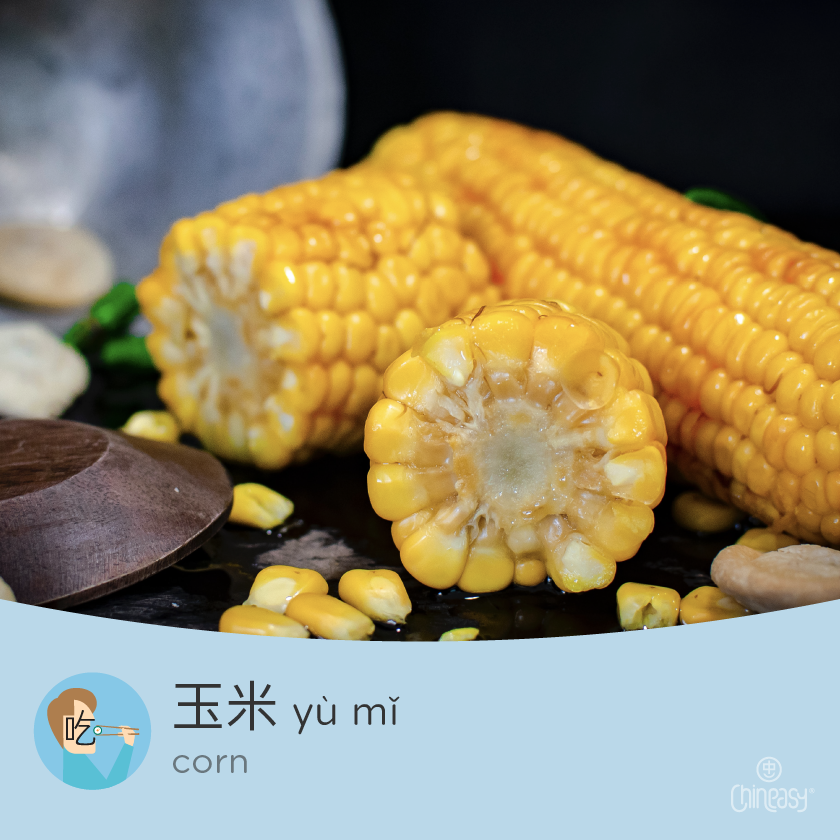
Nothing quite says summer barbecue like corn on the cob. This universal favorite is called 玉米 (yù mǐ) in Chinese, which literally translates to “jade rice.” This precious name reflects the value placed on corn when it was first introduced to China – it was deemed as rare and valuable as jade!
Chinese barbecues give a whole new meaning to corn on the cob. Instead of the traditional butter and salt, you might find 玉米 glazed with garlic soy, sweet chilli sauce, or a secret homemade concoction that’s a family guarded treasure.
If you ever find yourself wandering through a bustling Chinese street market, keep an eye out for 烤玉米 (roasted corn). Dusted with spices and roasted to perfection, it’s a flavorful journey you wouldn’t expect from a cob of corn. Don’t shy away from street vendors selling this golden delight – but remember, if spicy isn’t your style, a quick “不要辣” (bù yào là; lit. not want spicy) will ensure you get your corn without the heat.
Salad 沙拉
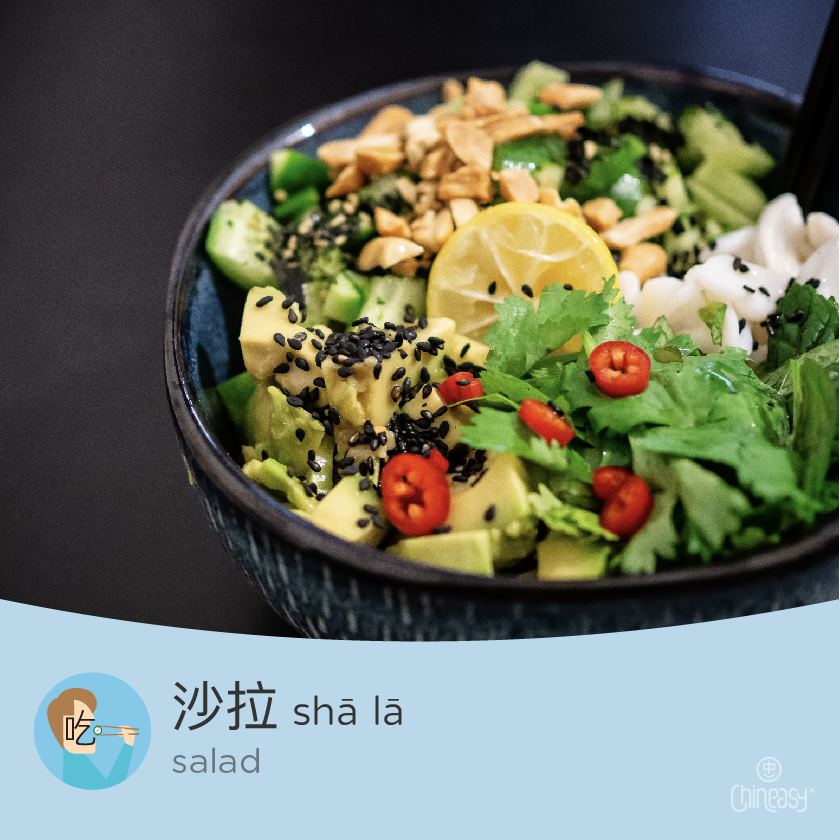
Salad, the quintessential sidekick to any BBQ feast, goes by the name 沙拉 (shā lā) in Chinese. This term is borrowed directly from the English word “salad,” and sometimes you might hear it called by another name: 色拉 (sè lā).
Chinese salads bring a unique spin to the table. Forget about your standard leafy greens and cherry tomatoes – in China, they add a twist with cold noodles, or 涼麵/凉面 (liáng miàn). Cold rice noodles, in particular, are a popular choice for this fusion of textures and flavors.
When it comes to enjoying veggies at a Chinese BBQ, the experience gets even more interactive. Rather than serving them up in a bowl, crisp lettuces or iceberg leaves are used as wraps for the juicy, roasted meats. This unique combination not only cuts through the richness of the meat, but also adds an exciting crunch to every bite.
Watermelon 西瓜
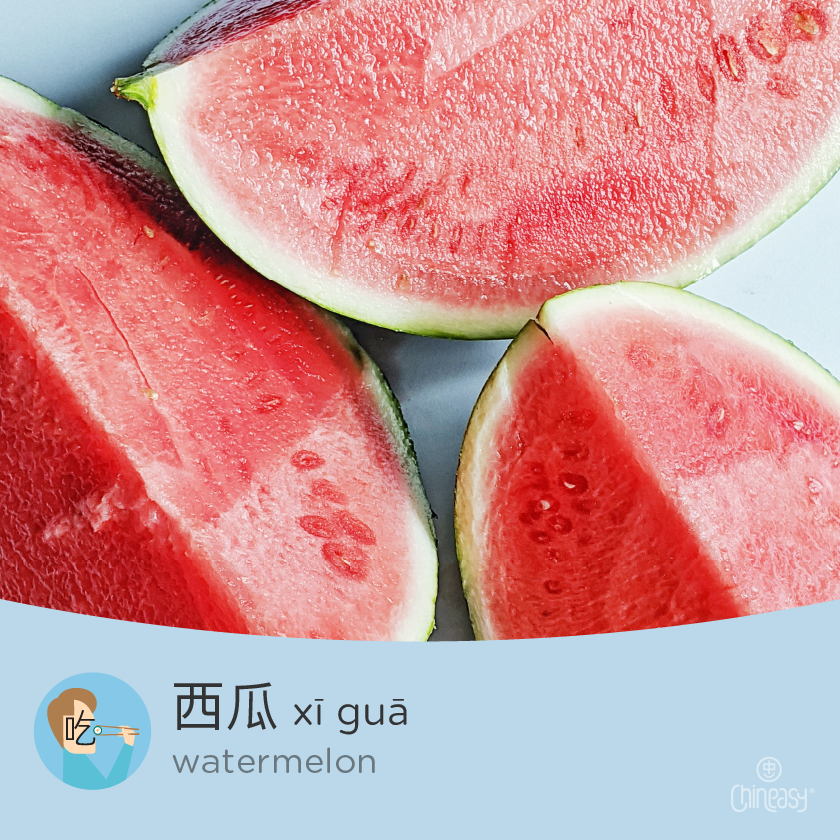
No summer food list is complete without a mention of refreshing fruits, and one fruit stands above them all – the watermelon. In Chinese, this beloved summer treat is known as 西瓜 (xī guā), or “west melon.” This intriguing name pays homage to its origins in western China, where it embarked on its journey to becoming a cherished summer favorite.
Interestingly, in China, watermelons aren’t just about the familiar red or pink flesh that we’re accustomed to. Here, you can also find yellow-fleshed watermelons. These golden delights bring a unique twist to the typical watermelon experience. Not only do they offer a vibrant color contrast, but they also come with a sweeter taste. Regardless of the color of the watermelon flesh, a slice of 西瓜 is the perfect companion for those hot summer days.
Pineapple 鳳梨/凤梨
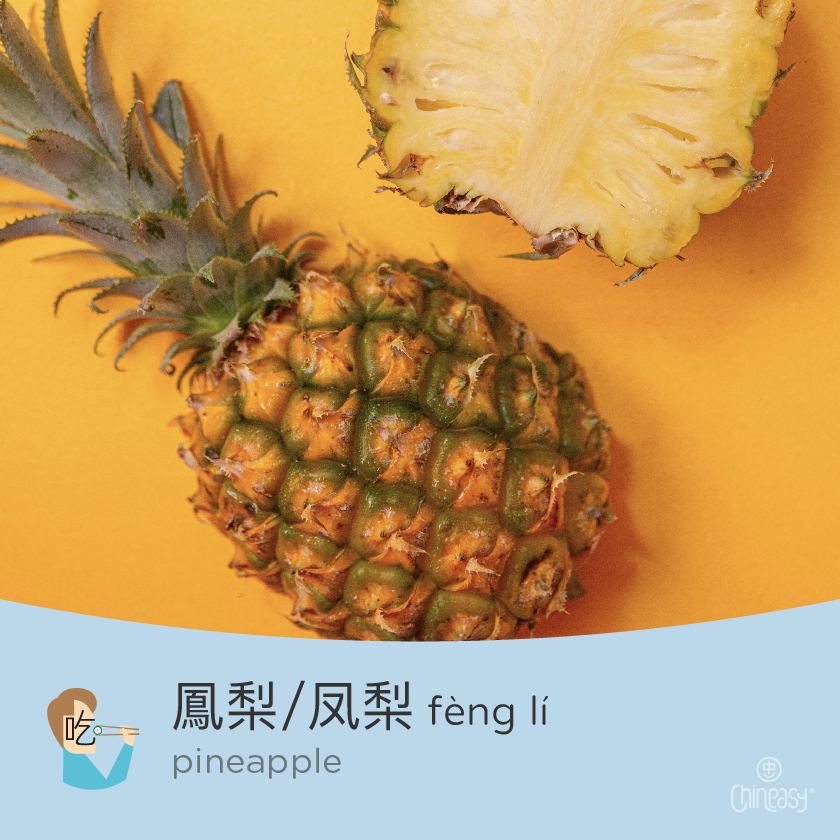
Pineapple is another popular summer fruit. Despite its spiky appearance, it is incredibly nutritious, being low in calories and high in fiber. Surprisingly, it even surpasses apples in its vitamin C content. In Chinese, this vibrant fruit goes by two names: 鳳梨/凤梨 (fèng lí) and 菠蘿/菠萝 (bō luó). Just as its English name reflects its unique appearance, “pine” for its spiky exterior and “apple” for the sweet fruit within, its Chinese terms also carry interesting meanings. Literally, 鳳梨/凤梨 (fèng lí) translates to “phoenix pear,” indicating its exotic origin, and 菠蘿/菠萝 (bō luó) is derived from the Sanskrit word “pāramitā” (perfection; completeness), which came into Chinese through Buddhism.
Mango 芒果
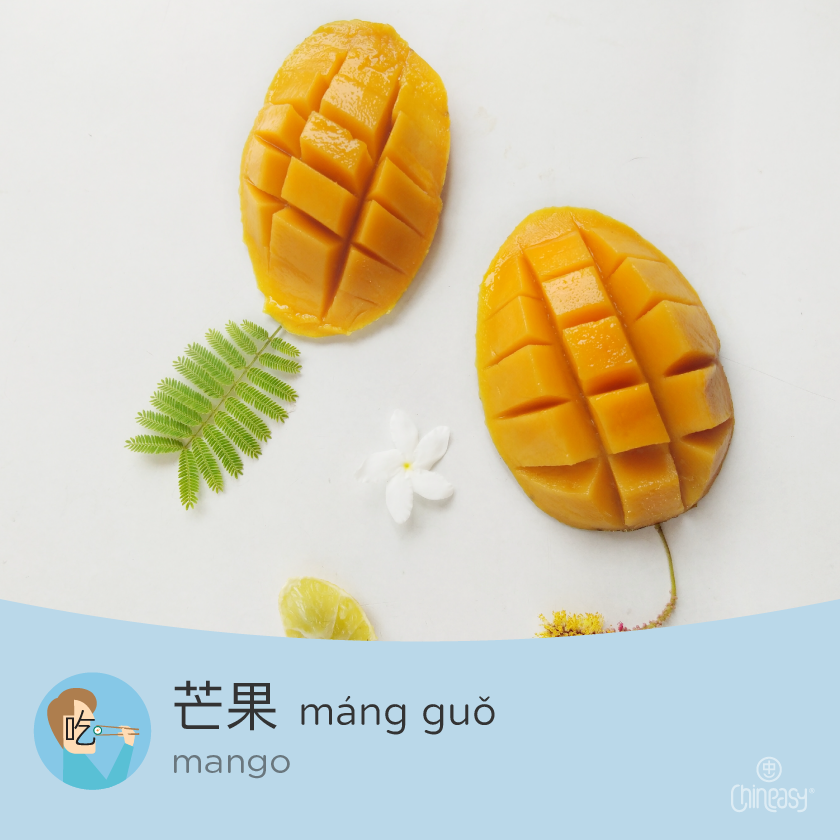
While mango might have once been an exotic fruit to those living in Western countries, it has since become widely available, especially during the summer season. In Chinese, this tropical fruit is called 芒果 (máng guǒ), a term borrowed directly from the English word “mango.”
Taiwan, in particular, is a paradise for mango lovers. During peak season, the island is abundant with more than 15 varieties of mangoes, earning it an international reputation for its diverse and delicious harvests. But in Taiwan, mango isn’t merely enjoyed as a fruit. It’s also incorporated into a wide array of summertime dishes, from savoury creations to sweet treats.
The most famous mango delicacy is undoubtedly the Taiwanese mango shaved ice, also known as 芒果雪花冰 (mángguǒ xuě huā bīng; mango + snow + flower + ice). This refreshing dessert, recommended by CNN Travel, is a must-try for anyone visiting Taiwan during the hot summer months. Imagine a mountain of finely shaved ice, almost as light as snowflakes (雪花), crowned with sweet, ripe mango chunks. Every mouthful is a delightful mix of the refreshing coolness of the ice and the rich, tropical sweetness of the mango.
Passion fruit 百香果
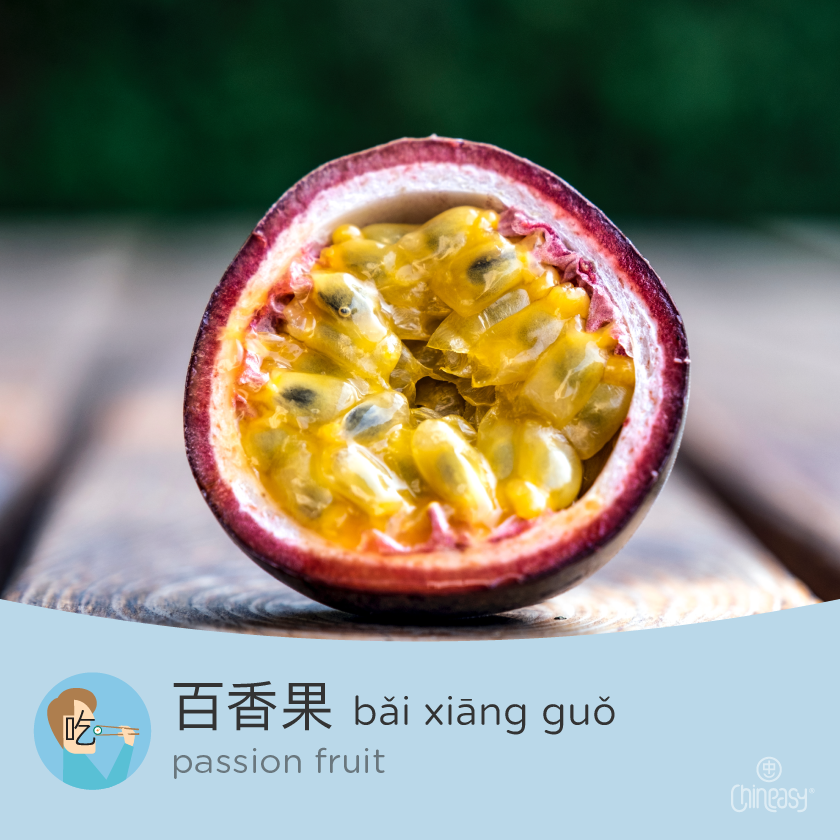
In China, passion fruit is known as 百香果 (bǎi xiāng guǒ). Interestingly, the pronunciation of 百香 (bǎi xiāng; hundred + fragrant) sounds similar to “passion” in English, giving this fruit its Chinese name. Despite its tartness, this tropical fruit offers a refreshing burst of flavor that’s hard to resist.
Lately, this tropical fruit has been gaining popularity in countries like the US and the UK, and it’s easy to see why – it adds an exotic twist to everything it touches. Stir it into yogurt for a refreshing snack or use it as a vibrant addition to your salad dressings. And if you’re up for a refreshing drink, scoop out the passion fruit’s flesh and seeds, mix them with orange juice, a handful of mint leaves, a few ice cubes, and a dash of syrup to balance the tartness, and you’ve got yourself a delightful summer beverage. If you haven’t given passion fruit a try yet, this summer is the perfect time to do so!
Ice cream 冰淇淋
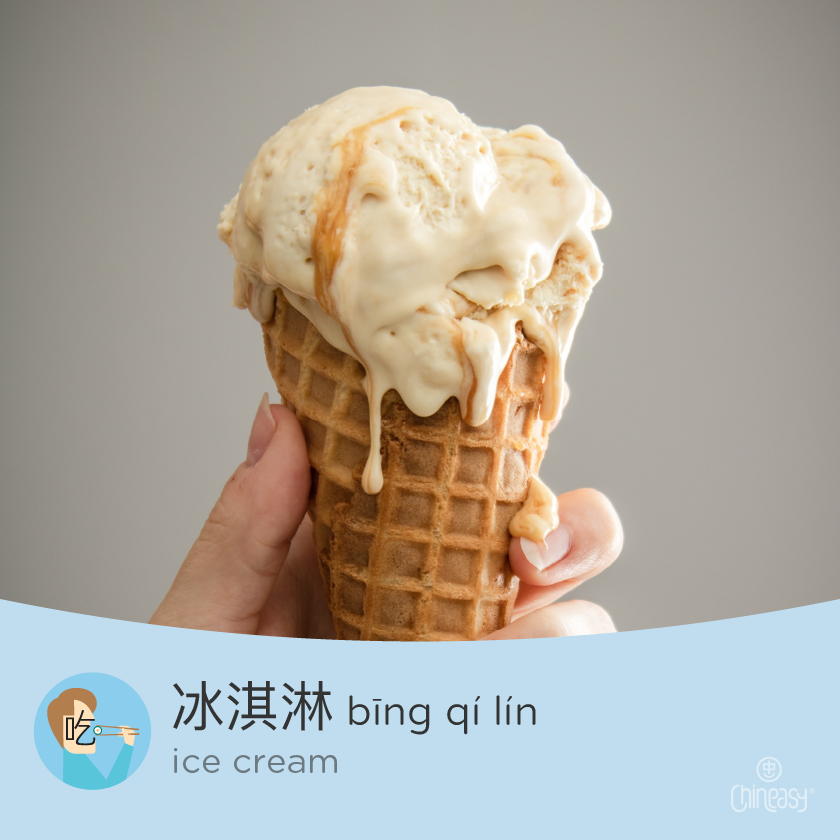
At last, we come to the grand finale – ice cream! There’s no denying it, ice cream, or 冰淇淋 (bīng qí lín), is the star of summer. It’s the perfect remedy for a sweltering day and a sweet way to cap off a delicious summer meal. Unlike Western habits of stocking up on ice cream at home, Chinese folks tend to enjoy this treat in the ambiance of ice cream shops or restaurants.
Fruit-flavored ice creams take the spotlight during summer. What could be more refreshing than a scoop of 芒果冰淇淋 (mángguǒ bīng qí lín) or 百香果冰淇淋 (bǎi xiāng guǒ bīng qí lín)? Go on, give it a go and try translating these two phrases!
And there you have it – 10 Chinese words will let you talk about all your favorite summer foods! Remember, practice makes perfect when it comes to learning a new language. So, don’t be shy! Try to use these words whenever you get a chance. The more you use them, the more natural they’ll feel. Keep speaking Chinese. Happy learning, and enjoy your summer!

